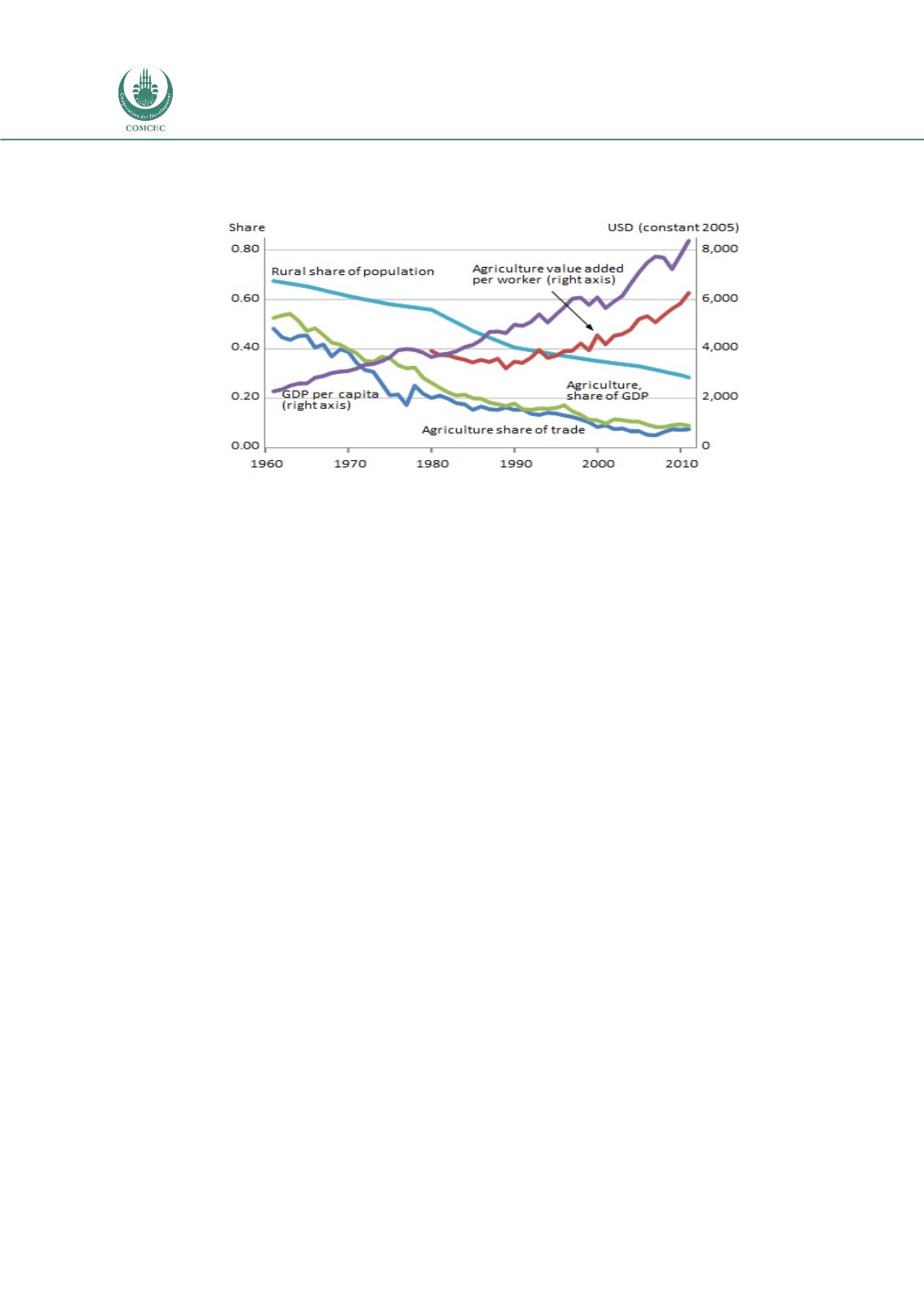

Facilitating Smallholder Farmers’ Market Access
In the OIC Member Countries
78
Competitiveness and sustainability
A Mediterranean climate and abundant land and water are the foundation of Turkey’s
strong agricultural sector. The sector also benefits from the country’s strategic location
next to key markets. Exports to trading partners in Europe and MENA reflect historical
advantages rooted in logistics and culture. These multiple advantages, along with income
and population growth in some of Turkey’s trading partners, have spurred vigorous
growth in Turkey’s agricultural exports. Fresh fruit and vegetables—high-value products
that can best be produced in a narrow set of agroclimatic zones—drive exports to the
north, into the rest of Europe. Exports to MENA in the south reflect that region’s growing
population and demand for value-added food products, as well as its lack of water to grow
staple grains. Rising incomes, especially in the wealthier countries of the Arabian
Peninsula, also drive exports of high-value products from Turkey.
Table 15ranks countries in Europe and nearby Central Asia and North Africa by the
amount of land available for agriculture and the amount of irrigated land. Turkey ranks
first in irrigated area, and fourth in land resources, with over 39 million hectares—
significantly behind Russia (which has more than 215 million hectares) and slightly
behind Algeria and Ukraine.
FIGURE 47: STRUCTURAL CHANGE AND THE TURKISH ECONOMY,
1961–2011
Source
: World Development Indicators (World Bank 2014h).

















